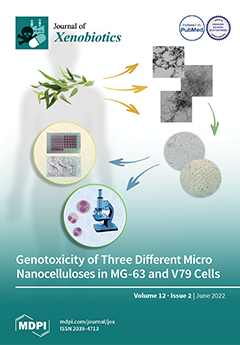Introduction: Type 2 diabetes (T2DM), which is more prevalent (more than 90% of all diabetes cases) and the main driver of the diabetes epidemic, now affects 5.9% of the world’s adult population, with almost 80% of the total in developing countries. At
[...] Read more.
Introduction: Type 2 diabetes (T2DM), which is more prevalent (more than 90% of all diabetes cases) and the main driver of the diabetes epidemic, now affects 5.9% of the world’s adult population, with almost 80% of the total in developing countries. At present, 537 million adults (20–79 years) are living with diabetes—1 in 10. This number is predicted to rise to 643 million by 2030 and 783 million by 2045. In India, reports show that 69.2 million people are living with diabetes (8.7%) as per 2015 data. Long-term metformin treatment is a known pharmacological cause of vitamin B12 (Vit B12) deficiency, as was evident within the first 10–12 years after it started to be used.
Methods: This was a cross-sectional study conducted in the Postgraduate Department of Medicine in one of the tertiary hospitals in Kashmir. A total of 1600 consecutive patients with T2DM were taken for the study. Out of which 700 patients met the inclusion criteria. These 700 patients were divided into two groups: those taking metformin, and those who were not on metformin. Cumulative metformin doses were recorded in patients taking metformin, using history of dose and duration of treatment. Serum Vit B12 levels were taken for all patients. Based on the results of Vit B12 levels, patients were classified into normal levels (20 pmol/L), possible B12 deficiency (150–220 pmol/l), and definite deficiency (<150 pmol/L).
Results: Our results depicted that patients on prolonged metformin therapy showed an increase in Vit B12 deficiency by 11.16%. The prevalence of clinical neuropathy in the metformin-exposed group was 45%, whereas, a prevalence of 31.8% was found in the non-metformin group. The mean age of patients with neuropathy was higher than those without neuropathy (59.01 ± 7.14 vs. 49.95 ± 7.47) (
p-value < 0.514, statistically insignificant).
Conclusions: In our study, we found that metformin use is associated with Vit B12 deficiency, which is dependent upon the cumulative dose of metformin. Importantly, prolonged metformin use is also associated with an increase in the prevalence of clinical neuropathy.
Full article






